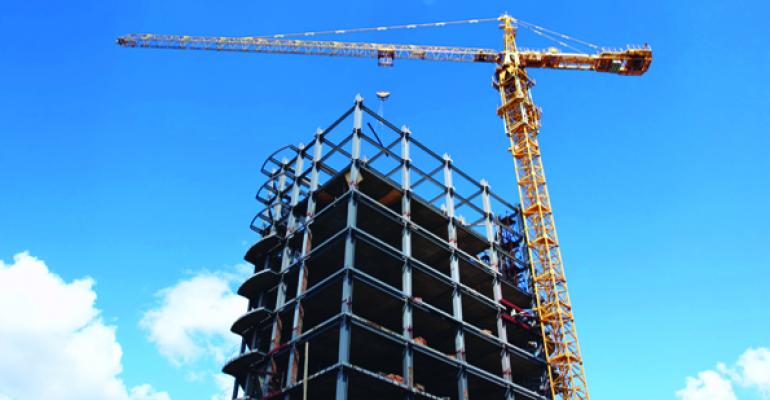The real estate analysts at the CoStar Group worry that the growth in multifamily development may be too much of a good thing.
“Apartment construction has been on a tear in certain markets,” CoStar says. “With the inventory growing at more than four or five times the national rate, vacancies will most likely increase.”
CoStar has picked out the apartment markets with the highest levels of construction currently underway compared the existing inventory of apartments. Raleigh, N.C., is at the top of the list, followed by San Antonio, Texas, and Austin, Texas. In all three of those cities, the number of apartments underway is more than 5 percent of the total existing inventory.
But CoStar worries the apartments now underway are just the beginning of an overbuilding boom. “It is not this wave of supply that we are worried about—it’s the next wave of supply that could swamp fundamentals,” says CoStar.
CoStar found that apartments currently under construction make up 1.4 percent of the total apartment inventory in the top 54 markets. Apartment developers are now far ahead of the developers of other property types. “New office construction makes up only 0.8 percent of the total inventory,” CoStar says. “New warehouse construction also makes up only 0.8 percent while new retail construction makes up only 0.6 percent.”
The question is whether the number of apartments under construction is oddly high, or whether the volume of everything else under construction is oddly low.
Across the U.S., in the decade before the crash, developers finished an average of about 132,000 apartments a year, according to a tally from Reis Inc., that includes institutional investment quality properties, but not government-subsidized affordable housing or other non-investment-quality multifamily. The total inventory of apartments averaged 9.3 million over the same period.
That works out to completions that averaged 1.4 percent of the total apartment inventory every year. Since a typical apartment property takes two or more years to build, makes the current average nationwide level of construction noted by CoStar seem significantly below average.
CoStar recommends that developers avoid trouble in the future by not overbuilding in a few markets. “The impact on top-tier markets, where most supply is currently coming on line, could be mitigated, though, if developers explore secondary markets where they can still find reasonable value and income.”
The apartments markets with the highest levels of construction compared to the existing inventory of apartments are mostly smaller cities with relatively low barriers to development. Many of the metros at the top of CoStar’s list also top the charts in terms of employment figures.
- In Texas, more than 8,000 units are underway throughout four major submarkets (Dallas, Houston, Austin and San Antonio, and many more projects are in the pipeline. Vacancy rates, which have reached historical lows in the metro, will reverse trend over the next year as Austin struggles to absorb the new supply, according to CoStar.
- Raleigh is leading the way with new apartment construction, which makes up more than 6 percent of the total apartment inventory in Raleigh, and nearly double its historical average, according to CoStar.

